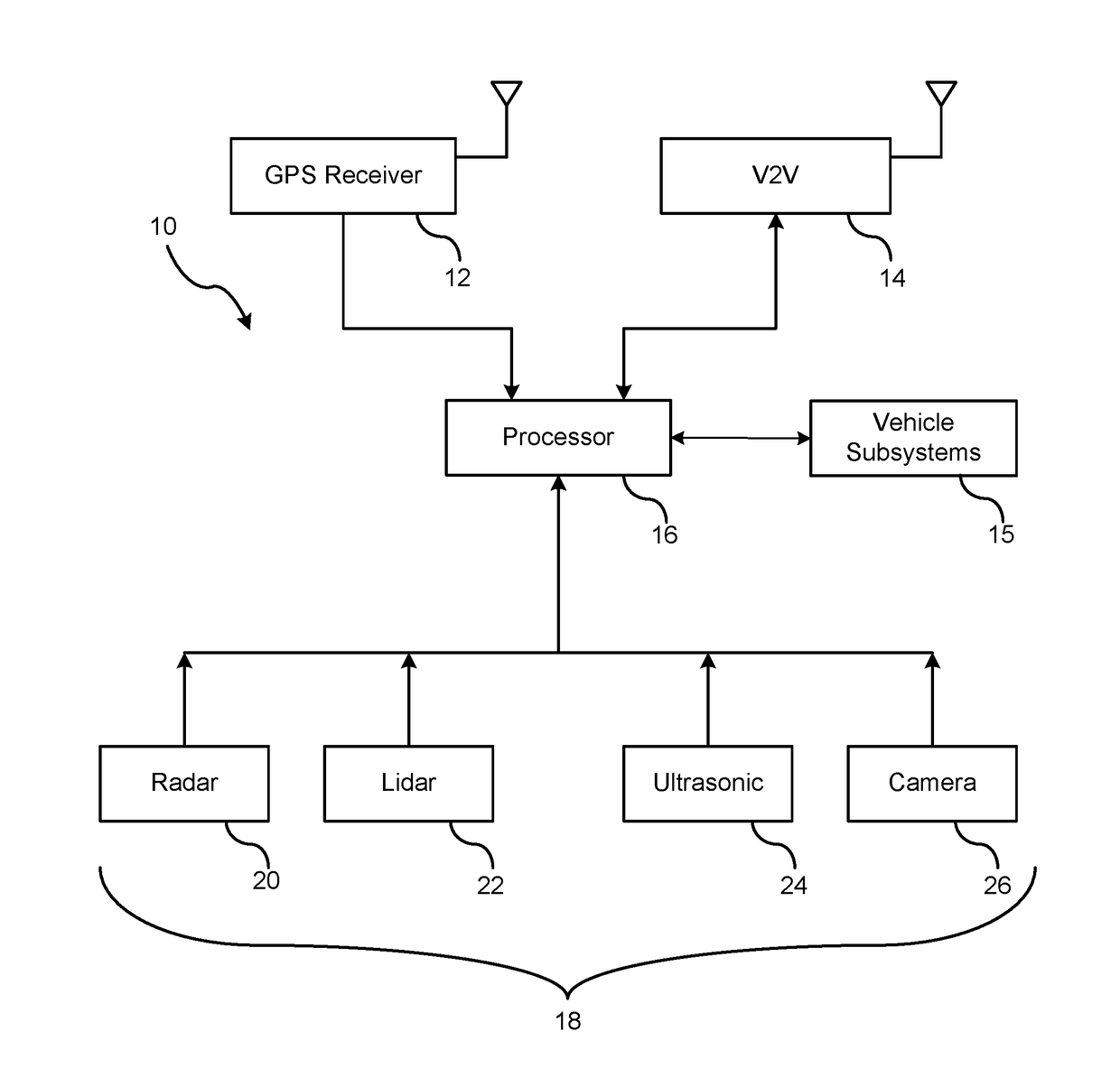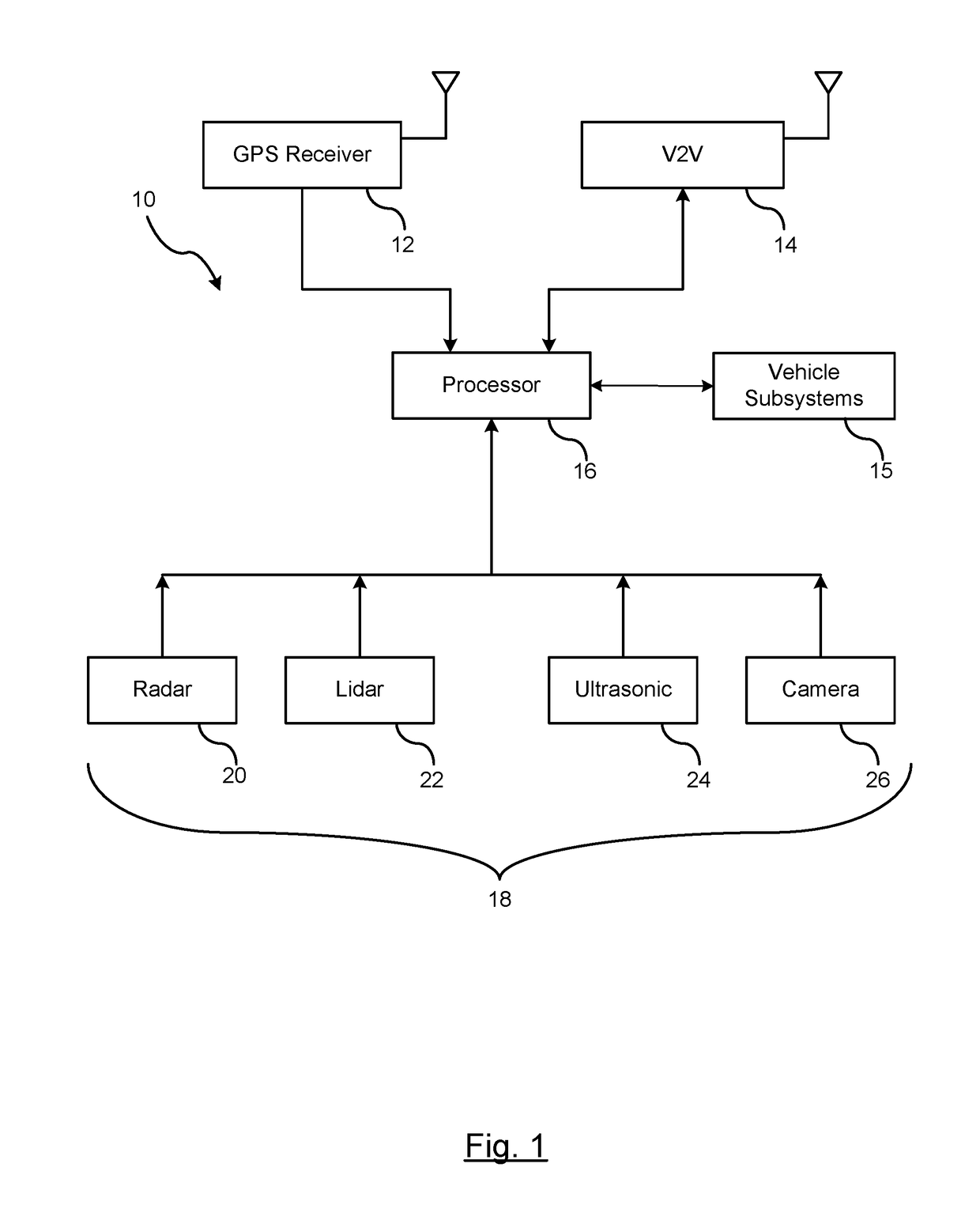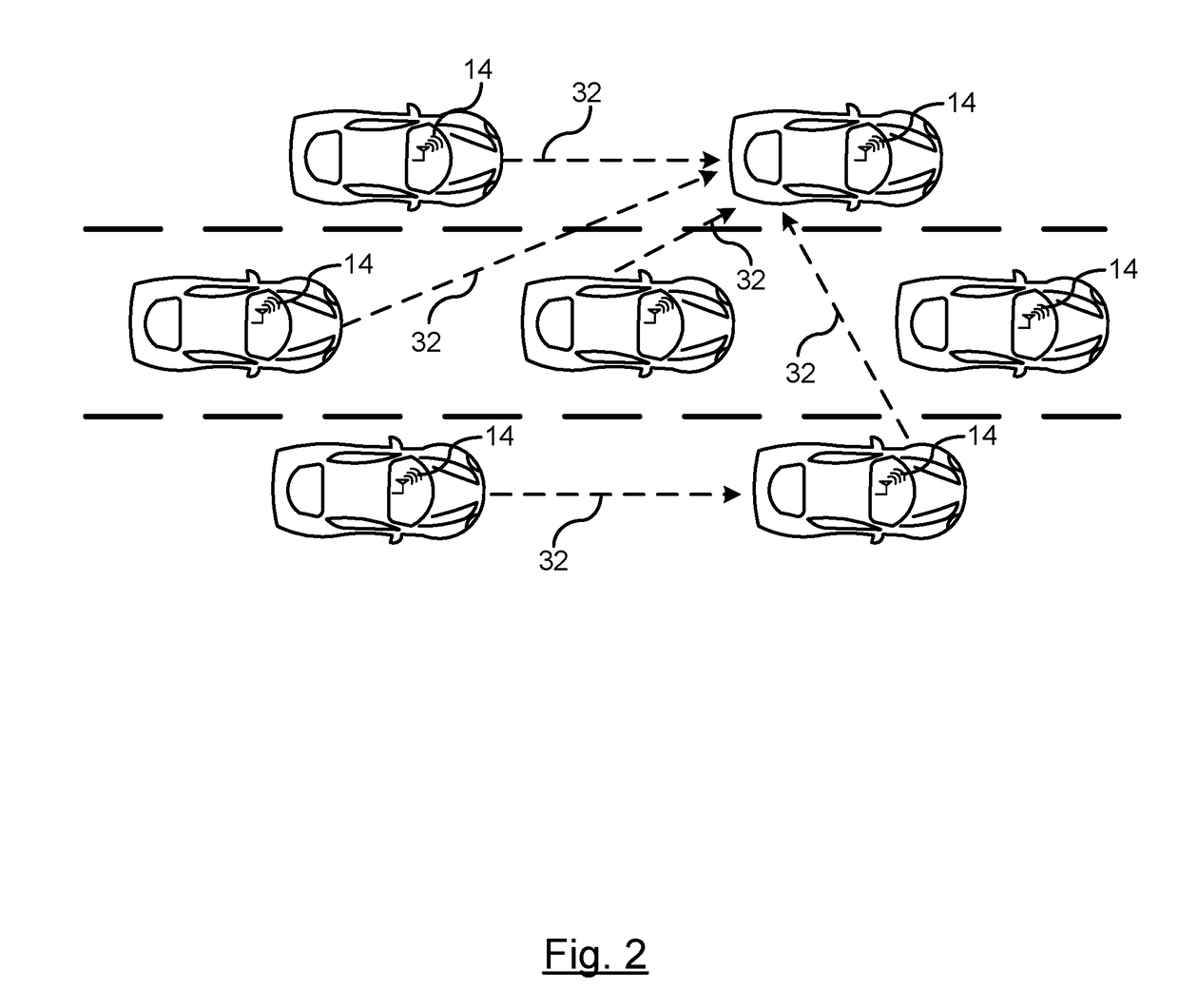V2V Collaborative Relative Positioning System
a technology of relative positioning system and gps data, which is applied in the direction of measurement devices, broadcast service distribution, instruments, etc., can solve the problem of reducing the optimal number of satellites required to accurately determine, and achieve the effect of increasing the confidence level of gps data
- Summary
- Abstract
- Description
- Claims
- Application Information
AI Technical Summary
Benefits of technology
Problems solved by technology
Method used
Image
Examples
Embodiment Construction
[0015]There is shown in FIG. 1, a block diagram of the vehicle vehicle-to-vehicle (hereinafter used in the detailed description and claims as V2V) collaborative positioning system 10 for a respective vehicle. The collaborative positioning system 10 includes an onboard Global Positioning System (hereinafter used in the detailed description and claims as GPS) receiver 12, a V2V communication device 14, a processor 16, and other on-board sensing devices 18.
[0016]The GPS receiver 12 functions by tracking line of sight signals received by orbiting satellites. The GPS receiver 12 disposed in the vehicle typically requires at least three or more satellites to be continuously available in an unobstructed line of sight. GPS data is received by the GPS receivers 12 for determining its absolute position. In viewing the earth in a two dimensional plane and setting aside altitude, an assumption can be made that the GPS receiver is receiving signals on a two-dimensional plane. Under such conditio...
PUM
 Login to View More
Login to View More Abstract
Description
Claims
Application Information
 Login to View More
Login to View More - R&D
- Intellectual Property
- Life Sciences
- Materials
- Tech Scout
- Unparalleled Data Quality
- Higher Quality Content
- 60% Fewer Hallucinations
Browse by: Latest US Patents, China's latest patents, Technical Efficacy Thesaurus, Application Domain, Technology Topic, Popular Technical Reports.
© 2025 PatSnap. All rights reserved.Legal|Privacy policy|Modern Slavery Act Transparency Statement|Sitemap|About US| Contact US: help@patsnap.com



